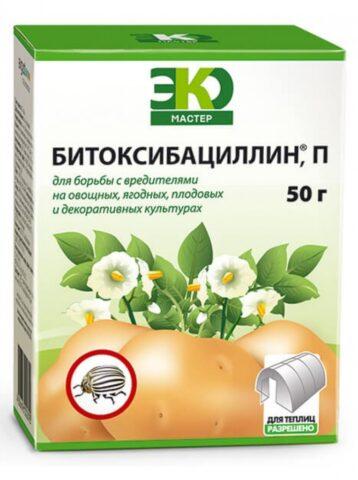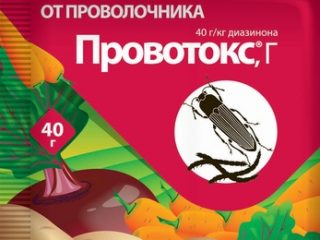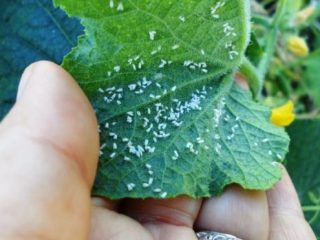Content
The leaf roller on a peach can cause significant harm to the tree, so its appearance cannot be ignored. Caterpillars pose a danger; it is more effective to combat the pest precisely at this stage of its life cycle. To eliminate leaf rollers on peach, drugs, folk remedies, and mechanical methods are used.
Description of the leaf roller with photo
Leafrollers are the name given to a whole family of butterflies, which includes over 1000 genera and ten times as many species. They look like this:
- females with bristly, males with finely ciliated antennae;
- thick body with a dense covering of hairs;
- short proboscis in the shape of a spiral, sometimes underdeveloped, no tentacles;
- 16 practically bare legs, with sparse scattered hairs;
- wings are roof-shaped at rest, often widening at the base, span up to 30 mm;
- jaw tentacles consist of three segments (the middle one is the longest) and protrude slightly;
- The pupae have belts of hooks on the abdominal rings.
The color of leaf rollers depends on the species. The caterpillars are often dirty green or light yellow, and their heads are black or brown. The body reaches 1-2 cm in length.

Leaf rollers give two generations over the summer, there are 60 eggs in a clutch, and the butterfly lays up to 300 eggs in one generation
What harm does
Leaf rollers feed on almost all parts of plants. This harms the peach in several ways:
- loss of decorativeness;
- decrease in yield;
- fruit spoilage;
- weakened immunity;
- decreased winter hardiness.
Signs of defeat
As the caterpillar feeds, the leaf roller secretes a web, which is used to fold the leaf across or along the central vein. It turns out to be a kind of home for the pest, which is the main sign of its appearance. There are other symptoms:
- clumping of inflorescences or ovaries - this occurs due to being pulled together by a web when they are eaten by a leaf roller caterpillar;
- the appearance of a white cobweb.
The leaf roller is easy to notice if its habitat is disturbed. The caterpillar strives to quickly escape from danger, backing away and hanging on the web.
Reasons for appearance
Often the wind brings leaf roller caterpillars into a garden with peaches. This likelihood is increased by the presence of unkempt trees and forests nearby. Young leaf roller larvae hang on a thin web, and the wind easily picks them up and carries them.
The pest overwinters well. In spring, its awakening causes the temperature to rise to 10 °C. The leaf roller begins to reproduce at 20-25 °C and high air humidity.
Fighting leaf rollers on peach
The leaf roller on a peach cannot be ignored. It harms trees and spreads quickly throughout the garden.
Preparations with leaf roller on peach
To get rid of leaf rollers on peach, pesticides, including biological ones, are used. Spray trees during the growing season.
An effective remedy for leaf rollers on peach is Karbofos. 60 g of powder or two 5 ml ampoules are diluted in 10 liters of water. This volume is enough for two adult or five young peach trees. The first treatment is carried out when the buds are swollen. Use the drug up to two times per season.

After the last treatment with Karbofos, at least 50 days must remain before harvest
Sumi-alpha is no less effective against leaf rollers on peach. 5 ml of the drug is dissolved in 10 liters of water, spending this volume on 2-5 trees, depending on their age and size. Spray the peach once.

The protective effect of Sumi-alpha lasts 2-3 weeks
You can treat the garden against leaf rollers on peach in the spring with Ivanhoe. Spraying is carried out up to two times per season. Dilute 3 ml of the product in 10 liters of water, using this volume for 2-5 peaches. Ivanhoe is used twice per season, the waiting period is 50 days.
Fatrin has a quick effect on leaf rollers on peach. This is a broad-spectrum drug. Peaches are treated with it twice a season. 3 ml of Fatrin is diluted in 10 liters of water, and up to 5 liters are used per tree.

After the last treatment with Fatrin, the harvest can be harvested after at least 50 days
Among the biological pesticides against leaf rollers on peach, Fitoverm is effective. It begins to act within 8-16 hours. The Fitoverma ampoule is diluted in 1-2 liters of water, stirred and the volume is adjusted to 10 liters. The resulting solution is sprayed on 2-5 peach trees. Fitoverm is used twice per season.

An important advantage of Fitoverm is the minimum waiting period - it is only three days
Another effective biological preparation for leaf rollers on peaches is Lepidotsid. Take 50 ml of product per 10 liters of water. First, it is diluted separately in a small amount of liquid, then the volume is adjusted to normal. 2-5 liters of working solution are used per tree. Treatments are carried out against each generation of pests. Wait 7-8 days between sprayings. An interval of five days is sufficient before harvesting.

The effectiveness of Lepidocid is higher and the duration of action is longer if you add a special bioadhesive Liposam
Among the biological products against leaf rollers on peach, Bitoxibacillin is effective. To prepare a working solution, take 40-80 g of the drug per 10 liters of water. The resulting volume is spent on 2-5 trees, based on their age. The treatment is carried out twice. The last spraying is permissible five days before harvest.

Already one day after treatment with Bitoxibacillin, damage to leaves by caterpillars decreases; after 2-3 days they begin to die
Folk remedies for leaf roller on peaches
You can deal with leaf rollers on peach using folk recipes. The following options are effective:
- Sagebrush. A 10-liter container is filled halfway with chopped fresh herbs, filled with water, left for two days, then boiled for 30 minutes over low heat. After cooling, filter and bring the volume to 10 liters. Before processing the peach, the solution is diluted in half with water.
- Tomato tops and roots. Grind 4 kg of fresh raw materials, add 4 liters of water, then boil for half an hour over low heat. After cooling, strain and squeeze. This decoction can be stored in sealed glass containers for up to a year.Before spraying, dilute it in half with water and add 40 g of soap.
- Tobacco dust (can be replaced with shag). 0.5 kg of the product is soaked in 10 liters of hot water for two days, filtered through two layers of gauze, gently squeezing. Add 50 g of liquid soap to the solution and immediately use it for spraying.
- Potato tops. Grind 4 kg of fresh or half as much dried herb, add 10 liters of warm water, filter after three hours, pour in 40 ml of liquid soap.
In addition to spraying peaches, traps are effective against leaf rollers. 1 liter jars or cut plastic bottles are hung on trees at a height of 1.5 m, which are filled one third with liquid:
- kvass on bread;
- molasses diluted with water;
- fermented jam;
- dried fruit compote.
Such traps are left on peaches overnight, and in the morning they are removed with the butterflies that got there.
Another method of combating leaf rollers is whitewashing the bark. It is effective to use a chalk solution with the addition of Karbofos (2%) or white clay (20% suspension). Before whitewashing, the dead bark is cleaned off.
Mechanical method
If the leafworm infestation of peaches is small, the caterpillars can be removed from the trees manually. Leaves that are characteristically rolled into a tube are removed. They need to be clamped tightly so that the pest remains inside. Such leaves are immediately destroyed.
You can manually collect not only caterpillars, but also butterflies. During the day they are inactive, so this is easy to do. The complexity of the method lies in the color of the pest, which is hardly noticeable against the background of the bark.
Prevention
The best remedy for leaf rollers on peach is timely prevention. The following measures will help with this:
- Timely treatment of peaches with insecticides. Use biological products effectively and safely.
- Hunting belts made of burlap. They are hung on the trunk in June and removed after harvesting.
- Collection and destruction of fallen leaves and other plant debris in autumn.
- Digging the soil in the tree trunk circle.

An effective product for early spring processing of peaches and other fruit crops is Profilaktin, it is used even before the buds open.
Conclusion
The leaf roller on peach leads to a decrease in its decorativeness and productivity, spoilage of fruits, and weakened immunity. The pest must be dealt with in a timely manner. To do this, you can collect caterpillars and butterflies by hand, use insecticides, decoctions and infusions according to folk recipes, and traps. Competent and timely prevention is required.








